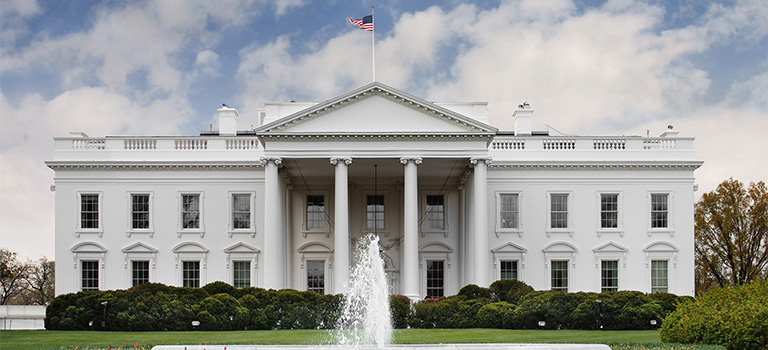On Wednesday, May 12, 2021, President Biden signed an Executive Order (EO) to improve the Nation’s Cybersecurity and to protect Federal Government Networks. After a string of cyber-attacks against the U.S. Federal Government, most recently the attack against Colonial Pipeline, a need for sufficient cybersecurity is more important than ever.
Below, is the Fact Sheet Press Release from The White House on the Executive Order signed by President Biden:
Remove Barriers to Threat Information Sharing Between Government and the Private Sector.
The Executive Order ensures that IT Service Providers are able to share information with the government and requires them to share certain breach information. IT providers are often hesitant or unable to voluntarily share information about a compromise. Sometimes this can be due to contractual obligations; in other cases, providers simply may be hesitant to share information about their own security breaches. Removing any contractual barriers and requiring providers to share breach information that could impact Government networks is necessary to enable more effective defenses of Federal departments, and to improve the Nation’s cybersecurity as a whole.
Modernize and Implement Stronger Cybersecurity Standards in the Federal Government.
The Executive Order helps move the Federal government to secure cloud services and a zero-trust architecture, and mandates deployment of multifactor authentication and encryption with a specific time period. Outdated security models and unencrypted data have led to compromises of systems in the public and private sectors. The Federal government must lead the way and increase its adoption of security best practices, including by employing a zero-trust security model, accelerating movement to secure cloud services, and consistently deploying foundational security tools such as multifactor authentication and encryption.
Improve Software Supply Chain Security.
The Executive Order will improve the security of software by establishing baseline security standards for development of software sold to the government, including requiring developers to maintain greater visibility into their software and making security data publicly available. It stands up a concurrent public-private process to develop new and innovative approaches to secure software development and uses the power of Federal procurement to incentivize the market. Finally, it creates a pilot program to create an “energy star” type of label so the government – and the public at large – can quickly determine whether software was developed securely. Too much of our software, including critical software, is shipped with significant vulnerabilities that our adversaries exploit. This is a long-standing, well-known problem, but for too long we have kicked the can down the road. We need to use the purchasing power of the Federal Government to drive the market to build security into all software from the ground up.
Establish a Cybersecurity Safety Review Board.
The Executive Order establishes a Cybersecurity Safety Review Board, co-chaired by government and private sector leads, that may convene following a significant cyber incident to analyze what happened and make concrete recommendations for improving cybersecurity. Too often organizations repeat the mistakes of the past and do not learn lessons from significant cyber incidents. When something goes wrong, the Administration and private sector need to ask the hard questions and make the necessary improvements. This board is modeled after the National Transportation Safety Board, which is used after airplane crashes and other incidents.
Create a Standard Playbook for Responding to Cyber Incidents.
The Executive Order creates a standardized playbook and set of definitions for cyber incident response by federal departments and agencies. Organizations cannot wait until they are compromised to figure out how to respond to an attack. Recent incidents have shown that within the government the maturity level of response plans vary widely. The playbook will ensure all Federal agencies meet a certain threshold and are prepared to take uniform steps to identify and mitigate a threat. The playbook will also provide the private sector with a template for its response efforts.
Improve Detection of Cybersecurity Incidents on Federal Government Networks.
The Executive Order improves the ability to detect malicious cyber activity on federal networks by enabling a government-wide endpoint detection and response system and improved information sharing within the Federal government. Slow and inconsistent deployment of foundational cybersecurity tools and practices leaves an organization exposed to adversaries. The Federal government should lead in cybersecurity, and strong, Government-wide Endpoint Detection and Response (EDR) deployment coupled with robust intra-governmental information sharing are essential.
Improve Investigative and Remediation Capabilities.
The Executive Order creates cybersecurity event log requirements for federal departments and agencies. Poor logging hampers an organization’s ability to detect intrusions, mitigate those in progress, and determine the extent of an incident after the fact. Robust and consistent logging practices will solve much of this problem.
For the first time in history, the EO that Biden signed will mandate the U.S. to meet, within a six-month period, a new set of cybersecurity standards for all software purchased by the Federal Government. This new EO is a major first part of a multi-layered strategy to combat the cybercriminals and protect the U.S.
Lauren Abshire
Tags: Biden, CyberNews, Cybersecurity, CyberStandards, ExecutiveOrder, Software, SupplyChain, UnitedStates



Leave a Comment